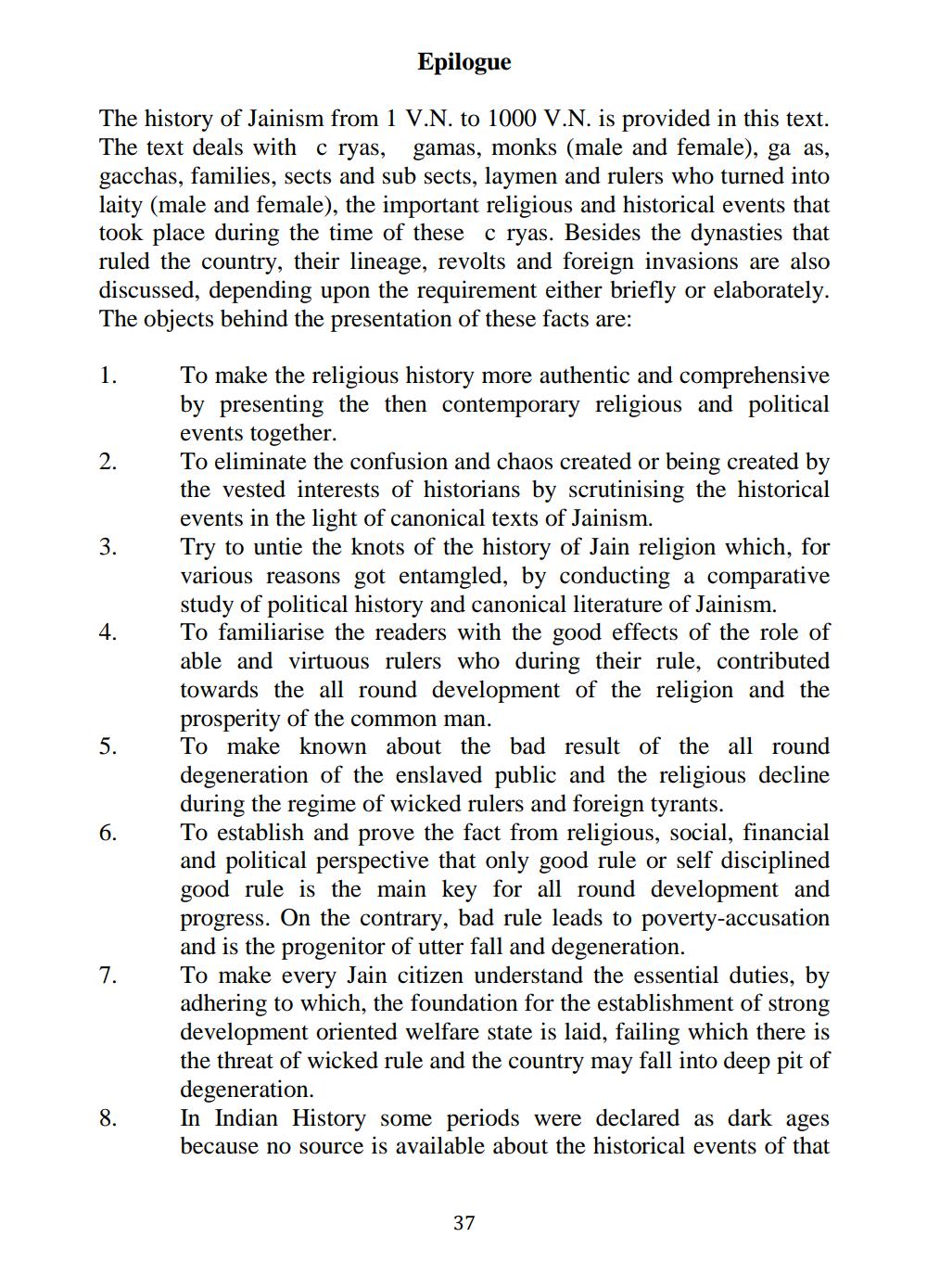________________
Epilogue
The history of Jainism from 1 V.N. to 1000 V.N. is provided in this text. The text deals with c ryas, gamas, monks (male and female), ga as, gacchas, families, sects and sub sects, laymen and rulers who turned into laity (male and female), the important religious and historical events that took place during the time of these c ryas. Besides the dynasties that ruled the country, their lineage, revolts and foreign invasions are also discussed, depending upon the requirement either briefly or elaborately. The objects behind the presentation of these facts are:
1.
To make the religious history more authentic and comprehensive by presenting the then contemporary religious and political events together. To eliminate the confusion and chaos created or being created by the vested interests of historians by scrutinising the historical events in the light of canonical texts of Jainism. Try to untie the knots of the history of Jain religion which, for various reasons got entamgled, by conducting a comparative study of political history and canonical literature of Jainism. To familiarise the readers with the good effects of the role of able and virtuous rulers who during their rule, contributed towards the all round development of the religion and the prosperity of the common man. To make known about the bad result of the all round degeneration of the enslaved public and the religious decline during the regime of wicked rulers and foreign tyrants. To establish and prove the fact from religious, social, financial and political perspective that only good rule or self disciplined good rule is the main key for all round development and progress. On the contrary, bad rule leads to poverty-accusation and is the progenitor of utter fall and degeneration. To make every Jain citizen understand the essential duties, by adhering to which, the foundation for the establishment of strong development oriented welfare state is laid, failing which there is the threat of wicked rule and the country may fall into deep pit of degeneration. In Indian History some periods were declared as dark ages because no source is available about the historical events of that
37




